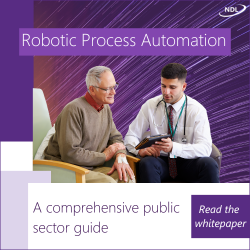
FOR REVIEW
The borough council is using the Alteryx platform to provide officials with accessible and detailed information on key social issues
Five years ago Stockton-on-Tees Borough Council had identified two barriers to making the most of its data for intelligent decision making: ‘white noise’ from the volume and disparate nature of the information, and limited analytical skills in its workforce.
This prompted it to begin a journey along what it identified as the information and intelligence continuum. This begins with the descriptive, analysing past data; moves to diagnostic, using the data to understand why something happened; to predictive of what will happen in the future; to prescriptive, determining which decisions and actions will produce the best outcomes.
The council took the first step in 2017-18 with the adoption of Microsoft Power BI for data visualisation, and a crucial second step the following year in looking at the Alteryx Analytics Automation Platform, which includes a range of pre-built tools – with the code already written – for configuring a workflow for data sharing and analytics.
It procured the platform in 2019 and, as the Covid-19 pandemic broke in early 2020, identified a priority need for the first use case in the form of a vulnerable children database. This was designed to take child level information from a wide range of sources – inside and outside the council – and provide stakeholders with immediate access to interactive intelligence, including vulnerability ratings and information on targeted interventions in social care, health and education.
It provides general information on factors such as the number of identified children in need, those in the council’s care, or under care protection, in early help programmes or with an education, health and care plan; and filters to detailed information for individuals, subject to access controls.
Game changer
Dr Johanne Parker, Stockton’s information and intelligence manager, says the “game changer” has been a column identifying if a child is in need and has an education, health and care plan. This pulls together information previously held in different systems that can now be seen on one screen.
She adds that the database “has provided intelligence to make decisions quickly, craft new services, work with health partners better, saved around £35,000 by doing it as low code just within team, and freed up capacity to work on other things”.
The council has followed this up by using the Alteryx platform and Power BI to develop a community safety dashboard, bringing together incident records from its anti-social behaviour (ASB) team and Cleveland Fire Brigade. This provides information on the numbers of ASB incidents by category, ward, date and hour of the day, along with filters to details on types and specific incidents.
Parker says this has transformed the planning of ASB services and allocation of resources, and subsequently reduced the number of incidents and improved the quality of life for residents.
She cites the verdict of the council’s community protection operations manager: “The ability to run reports containing many different views helps managers to performance manage, and is also helpful to present to stakeholders to demonstrate the picture of a particular area ….
“Plus, we are now able to see where resources are most suited at different times of the day so we can allocate them accordingly. For instance, the dashboard has supported our resource planning to combat complaints about vehicle issues, thus improving quality of life.”
Changing lives
Parker says: “We went from using lots of look-ups and spreadsheets to a slicker way of working; used Alteryx to develop a workflow to bring all information from in-house systems and external organisations in health sector, developed new data sharing arrangements under the COPI notice, and saw quickly how lives were changing on the ground.
“The data is more accessible and we could deliver it to partners in schools, health, social care. It gave them fingertip access when previously they would have had to request the information and wait for days.”
She says the council has surveyed the responses of staff who have used the software and summed it up in a word cloud full of positive terms in which ‘accessible’, ‘easy’, ‘automate’, ‘effective’ and ‘powerful’ are prominent.
“It’s been a life changing opportunity for us,” she says. “We have a small team but it’s working very differently and changing the world around us.”
Future plans
She adds that it has taken the council further along the information and intelligence continuum, with plans to use the software to monitor and improve data quality, automate reports with routine management information reports and advanced intelligence, and deliver visually engaging self-service dashboards for teams to reduce the number of ad hoc queries for information.
It will all add up to improving access for officials to empirical evidence to underpin service planning and delivery, and in turn should lead to more savings and better outcomes. The council also hopes it can contribute to a sustainable reduction in vulnerability among its residents.
“We’re going to keep going, moving into the next stage of the information intelligence continuum on a more permanent basis,” Parker says.
Catch up with Dr Johanne Parker's presentation from UKAuthority's Smart Places & Communities 2022 below (or here):





